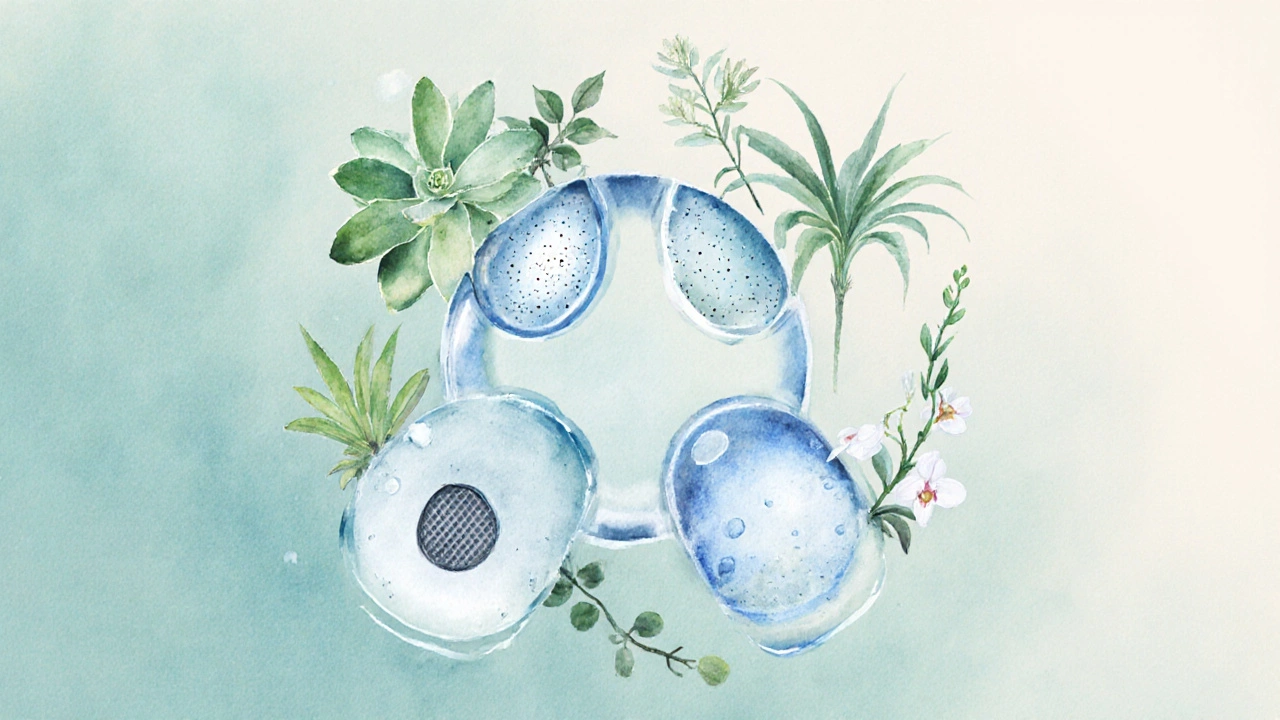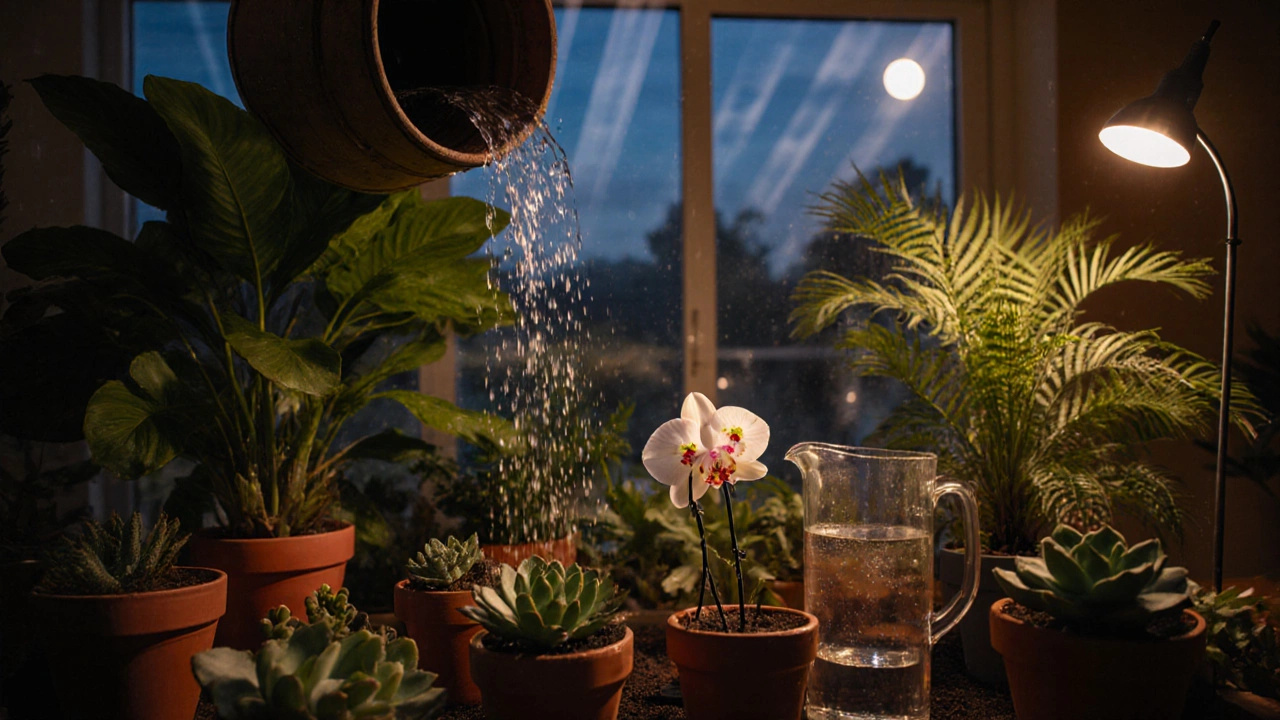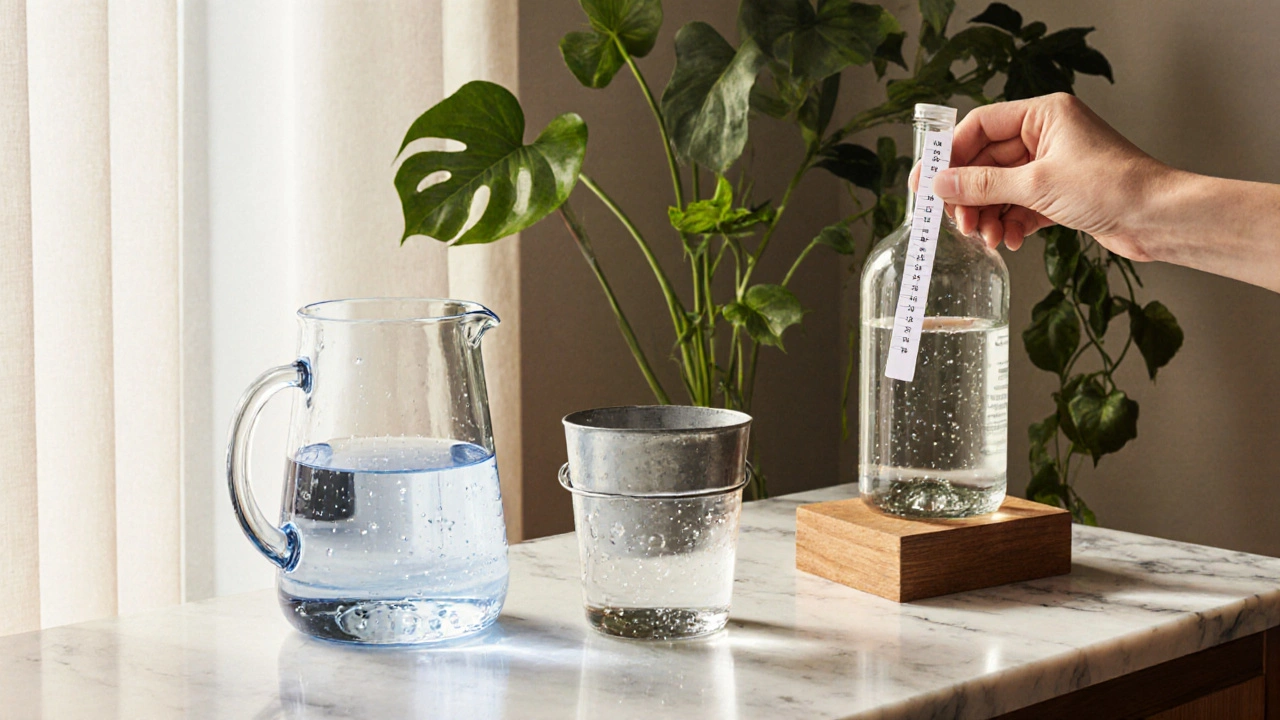Indoor Plant Water Selector
Recommended Water Type
Tap Water
Good for most plants. Let sit 24 hours to remove chlorine.
Rainwater
Ideal for tropicals and sensitive plants. Collect in clean containers.
Distilled Water
Best for orchids and palms. Avoid exclusive use due to lack of minerals.
Filtered Water
Great for fiddle leaf figs and succulents. Replace filters regularly.
Quick Takeaways
- Use room‑temperature water; cold water shocks roots.
- Tap water works for most plants if you let it sit 24h to dissipate chlorine.
- Rainwater is naturally soft and ideal for tropical foliage.
- Distilled or reverse‑osmosis water is best for palms and orchids that hate salts.
- Test pH and hardness when you suspect nutrient problems.
When you water a houseplant, you’re not just giving it H₂O - you’re delivering a cocktail of minerals, gases, and temperature that can make or break growth. Figuring out best water for indoor plants isn’t a mystery; it’s a matter of matching the water’s chemistry to the plant’s natural habitat.
What "water quality" really means for indoor greenery
Plants absorb water through their roots, but they also take up dissolved salts (calcium, magnesium, sodium), minerals (iron, potassium), and gases (oxygen, carbon dioxide). The key attributes that influence plant health are:
- pH level - a measure of acidity or alkalinity. Most houseplants thrive between 5.5 and 6.5.
- water hardness - concentration of calcium and magnesium, expressed in ppm (parts per million). Soft water (<60ppm) is gentle; hard water (>180ppm) can build up salts.
- chlorine - added by municipal utilities to kill pathogens, but it can leach leaf tissue if not evaporated.
- fluoride - sometimes added for dental health; many foliage plants are sensitive.
Understanding these four variables lets you decide which water source fits your plant collection.
Common water sources and their typical profiles
Below is a snapshot of the most accessible water types for indoor gardeners. Values are averages; your local supply may vary.
| Source | Typical pH | Hardness (ppm CaCO₃) | Chlorine / Fluoride | Best For | Notes |
|---|---|---|---|---|---|
| Tap (municipal) | 6.5-8.0 | 120-250 | Chlorine present, fluoride often added | Most hardy foliage (spider plant, pothos) | Let sit 24h to evaporate chlorine; use filter for fluoride. |
| Rainwater | 5.0-6.5 | 0-30 (very soft) | Generally none | Tropicals, orchids, carnivores | Collect in clean, covered containers; avoid polluted rooftops. |
| Filtered (carbon) | 6.0-7.0 | 30-80 | Most chlorine removed, fluoride may remain | Fiddle‑leaf figs, succulents | Replace filter every 2-3months for consistent performance. |
| Distilled / RO | ~7.0 | 0 (virtually) | None | Palms, orchids, sensitive foliage | Can leach nutrients if used exclusively; mix with tap water occasionally. |
| Bottled spring | 6.0-7.5 | 50-150 | Varies by brand | Convenient for occasional use | Costly; not eco‑friendly for large volumes. |
How to assess your local water
Before you pick a source, run a quick test. A basic home kit (often sold as “water hardness test strips”) will tell you the ppm of calcium/magnesium. For pH, inexpensive digital meters or paper strips work fine.
If you discover high fluoride, a simple activated‑charcoal filter can knock most of it out. For chlorine, a 24‑hour stand‑still or a cheap “dechlorinator” liquid works equally well.
Document your readings in a notebook. Over time you’ll see patterns - e.g., a spike in hardness after a city water renewal - and can adjust watering schedules accordingly.

Temperature matters more than you think
Plants naturally drink water close to ambient temperature. Cold water (from the fridge) can cause root shock, especially in tropical species that grow in warm, humid environments. Here’s a quick rule:
- For temperate houseplants (snake plant, ZZ plant) - room temp (68‑72°F / 20‑22°C) is fine.
- For tropicals and orchids - aim for 70‑75°F (21‑24°C).
Simply fill a watering can and let it sit on the countertop for about an hour before use.
Choosing the right water for specific plant groups
Succulents & cacti: They store water in leaves, so they tolerate a bit of mineral buildup. Tap water that’s been left to sit is usually sufficient.
Foliage tropicals (Monstera, Philodendron): Prefer soft, low‑mineral water. Rainwater collected in a clean barrel is ideal; filtered water works as a backup.
Orchids: Very sensitive to salts. Distilled or reverse‑osmosis water is the safest bet, but mix 1part distilled with 2parts tap to avoid nutrient leaching.
Palms (Kentia, Areca): Like orchids, they dislike fluoride. Use dechlorinated tap water or distilled water.
Fern varieties: They love slightly acidic rainwater. If rain isn’t an option, add a teaspoon of apple cider vinegar per gallon of tap water to drop the pH into the 5.5-6.0 range.
Practical watering routine
- Check soil moisture with your finger or a moisture meter.
- Gather the appropriate water type based on the plant’s needs.
- Let water reach room temperature (about 30minutes on the bench).
- Water evenly until excess drains from the pot’s bottom.
- Empty the saucer after 5-10minutes to prevent root rot.
Consistency beats perfection. If you stick to a schedule, occasional variations in mineral content won’t harm a healthy plant.
When to rethink your water choice
If you notice any of these signs, it’s time to adjust:
- White crust on soil surface - likely calcium buildup from hard tap water.
- Yellowing leaf tips - could be fluoride toxicity or chlorine burn.
- Stunted growth despite adequate light - may indicate a pH mismatch.
Switching to rainwater or distilled water for a few weeks usually reverses the damage.
Bottom line: no single "best" water for every plant
The perfect answer is a match‑up. For most casual indoor gardeners, letting tap water sit 24hours eliminates chlorine, and using a basic filter handles fluoride. Add a rainwater barrel for the extra‑sensitive tropicals, and keep a small bottle of distilled water for orchids and palms.
With a simple test kit and a habit of checking temperature, you’ll have all the data you need to pick the right water, every time.

Frequently Asked Questions
Can I use bottled spring water for all my indoor plants?
Bottled spring water is generally soft and low in chlorine, so it works well for many plants. However, it can be pricey and the mineral profile varies by brand. For a large collection, it’s better to treat tap water or collect rainwater and reserve bottled water for occasional use.
How long should I let tap water sit to remove chlorine?
A 24‑hour stand in an open container is enough for most municipal chlorine. If your water uses chloramine (a more stable compound), let it sit 48hours or use a commercial dechlorinator.
Is rainwater always safe to use?
Rainwater is naturally soft and free of chlorine, but it can pick up pollutants from roofs or air. Use a clean, covered barrel, and if you live in an industrial area, consider a basic mesh filter before storing.
Do I need to water my plants with distilled water all the time?
Pure distilled water lacks minerals, so using it exclusively can leach nutrients from the soil. Mix distilled water with a small amount of tap or filtered water, or fertilize a bit more often to keep nutrient levels balanced.
What’s the easiest way to test water hardness at home?
Purchase a hardness test kit (strip or drop‑test) from a garden centre. Dip the strip in a sample, wait the recommended time, and compare the colour chart. The reading gives you ppm of calcium carbonate, letting you decide if you need a softening filter.
